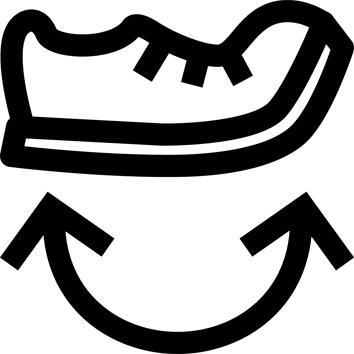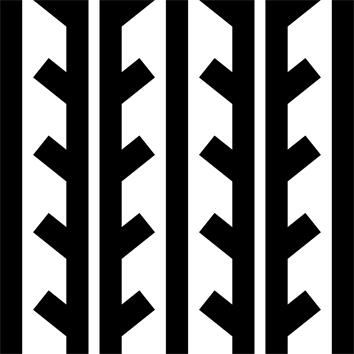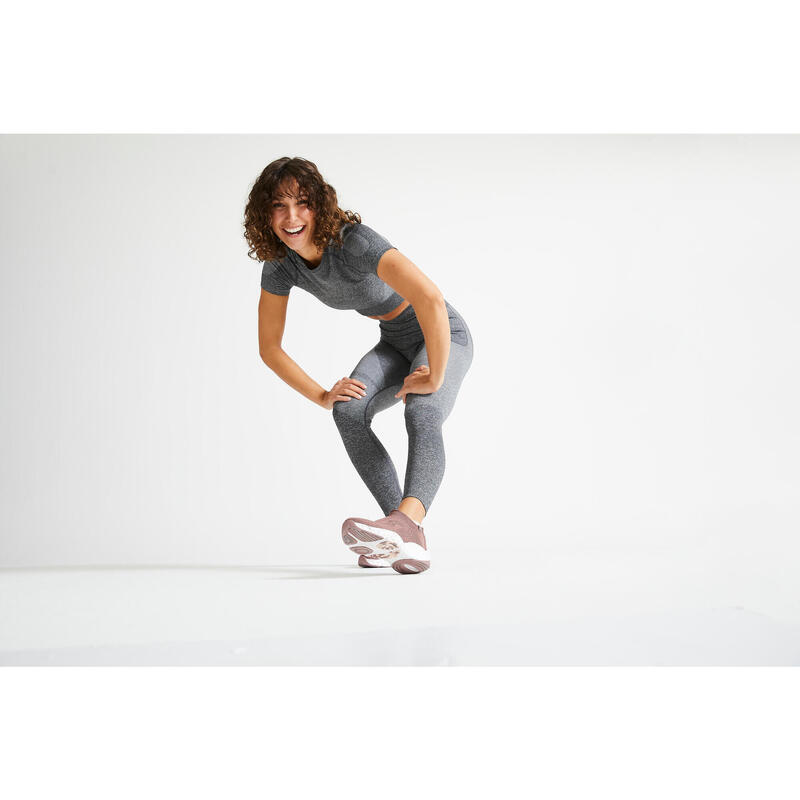Why wear a fitness shoe?
Studies carried out by our Sporstlab laboratory have shown the presence of a wide variety of movements in fitness training, different from other sports. Movements such as rotations, cluster jumps, squats and lunges. We develop our shoes to help you perform these movements without risk of injury. Wearing shoes adapted to fitness reduces the risk of injury by 20% compared with running shoes.
SOLE DROP: difference in height between the front and back of your foot.
All our fitness shoes feature a 4mm drop. This 4mm drop gives you a sensation closer to your natural position (barefoot = zero drop).
Multi-directional flexibility
Multidirectional flexibility is the shoe's ability to allow flexion and torsion to facilitate changes of direction.
Studies have shown that the need for flexion/extension is 1.7 times greater in fitness than in running. Ankle movement also differs between fitness and running. That's why we're developing multidirectional shoes adapted to fitness movements.
Forefoot support
Why is this important?
Forefoot support, the mainstay of fitness, helps you keep your balance when you touch the ground to change direction.
Forefoot cushioning
Cushioning is the shoe's ability to absorb shock and dampen vibration.
The impact between the foot and the ground is created in the forefoot during fitness training, whereas for running the impact is generally in the heel. We design our shoes with optimum cushioning in the forefoot to protect your body from repeated impacts, while stabilizing your footing for better movement sequencing.
Grip and rotation
The grip of this model enables quick and easy changes of direction, while the rotation zone, where there is less grip, allows easy turning or pivoting without straining the joints. Finding the right balance between these two needs is therefore fundamental. A combination of sensory, mechanical and biomechanical tests has enabled us to determine the right level of grip and the support zone used during your rotations.
How do you prove it? PRODUCT TEST
In our laboratories, our researchers analyze movements using sensors that precisely measure the reactions of the human body. But because nothing beats experience in the field, we also test our products in the fitness rooms where they will be used. These tests enable us to offer technical products that are accessible to all, with the sole aim of enabling you to enjoy your sport in the best possible conditions.
The bonus? No marks on the floor.
Our sole has been designed to leave no marks on the ground.
Can you run on carpet with fitness shoes?
Our fitness shoes have been specially designed for cardio fitness. However, they are suitable for running on mats, but only for limited use. In fact, if you want to warm up on a mat before and/or after a class, these shoes are ideal for the purpose. However, if you run exclusively on a treadmill or outdoors, we strongly advise you to use shoes designed for running, for safety reasons.
Fitness shoes, exclusively for indoor use?
Cardio fitness is mostly practiced in the gym and/or at home. Our shoes have therefore been designed for indoor use. The rubber is specifically designed for indoor use, as it is "softer". Wearing these shoes outdoors on asphalt will accelerate rubber wear prematurely. The grip of our soles is tested according to the floors used indoors or at home, and the rubber is designed to be more adherent in practice.






